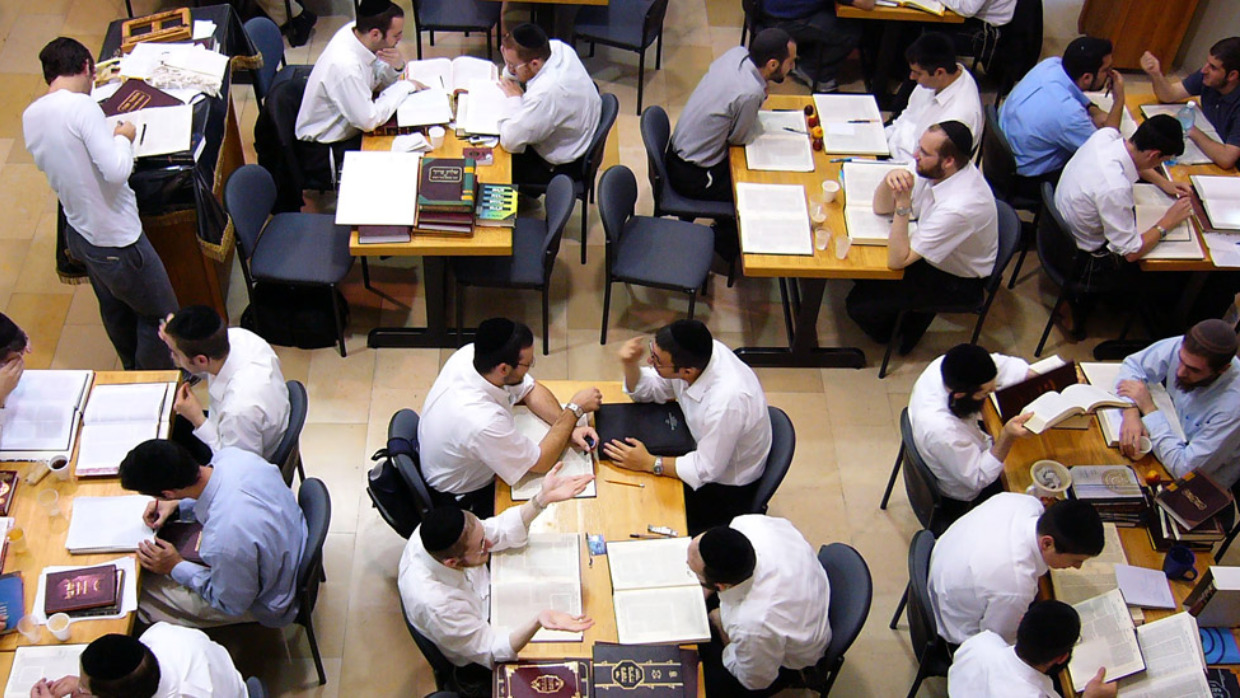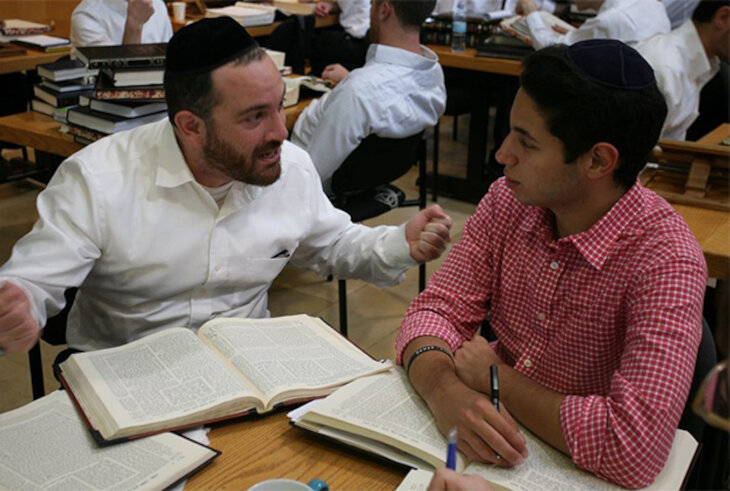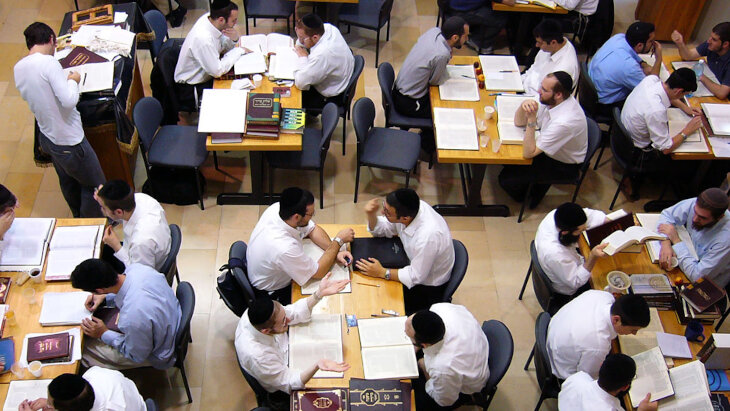 Vampire Weekend's Surprising Jewish Stories
Vampire Weekend's Surprising Jewish Stories


9 min read
The Talmud, a vast and deep reservoir of Jewish legal and ethical teachings, has been the bedrock of Jewish life and learning for millennia.
The Written vs Oral Law
Why Was The Talmud Written?
What does Talmud mean?
When was the Talmud written?
Who wrote the Talmud?
Who Were The Tannaim & Amoraim?
Studying Talmud
How does the Talmud affect the daily lives of Jewish people?
FAQs
Before we can understand the Talmud, we must understand the difference between the written and oral law in Judaism. The written and oral law are like having two halves of a book, each complementing and illuminating the other.
The Written Law, also known as the Torah, is essentially the Jewish constitution. It's contained in the first five books of the Torah, given by God to Moses on Mount Sinai. It's the cornerstone, the bedrock of Jewish life and belief.
The Oral Law, also given at Mount Sinai, is a bit like the director's commentary of the Written Torah. It helps us understand the Torah better. The Written Law can be pretty concise and sometimes leaves us with questions. The Oral Law, passed down from generation to generation and eventually written down in the form of the Talmud, steps in to fill in the gaps. It gives us context, explains how the laws should be applied in daily life, and offers interpretations and rulings on ambiguous points in the Written Law.
The Written and Oral Laws go hand in hand. One cannot function without the other. Together, they form the comprehensive framework of Jewish law and practice.
The Talmud was written down due to a significant shift in circumstances for the Jewish community. During the 2nd century CE, Jewish communities started to disperse more widely due to a variety of historical and political factors. This dispersion posed a challenge for the preservation of oral traditions.
The oral teachings and interpretations, which were traditionally passed down from one generation to the next, were at risk of being lost or misunderstood. To address this, the Talmud was created to formally record these traditions.

In essence, the creation of the Talmud was a crucial step in preserving the wealth of Jewish knowledge, ensuring its teachings could continue to guide and inform future generations, no matter where they found themselves in the world.
The word 'Talmud' comes from the Hebrew 'Limud' (לִמּוּד), meaning ‘to learn’. This word carries the weight of 'learning' or 'study', much like a well-worn book carries the promise of knowledge. Think of the Talmud as a huge library of Jewish wisdom. It's more than just a collection—it's a tribute to the pursuit of understanding.
Inside this expansive world, you'll find a mix of subjects, like a grand intellectual buffet. There are the hard edges of legal texts, the thoughtful navigation of ethical guidelines, the mind-bending wonders of philosophy, and the tapestry of history unfurling over centuries. Each part contributing to a whole, making the Talmud not just a word, but a symbol of the richness of Jewish thought and tradition.
Between the 3rd and 5th centuries CE, the Talmud was carefully crafted. There are two versions - The Babylonian and Jerusalem Talmud. They are like two siblings, each with its own personality. The Babylonian Talmud, born in the ancient lands of Babylonia—what we now call Iraq—is the more well-known of the two. It's become the go-to reference for most scholars. On the other hand, the Jerusalem Talmud took shape in the Land of Israel, a companion volume with its own unique insights. Though perhaps less well-known, it's still an integral part of the Talmudic tradition.
The Talmud isn't the work of a single person, but a repository of discussions by leading Torah scholars spanning generation. Think of it as a grand conversation between scholars known as the Tannaim, and further discussions amongst the Amoraim, who lived when the Talmud was being put together. Their discussions and debates were full of life, bouncing back and forth like a lively game of intellectual tennis. They didn't just read and nod—they dug deep, adding their own thoughts and interpretations. It's their insights that give the Talmud its richness and depth, making it a living, breathing testament to the power of shared wisdom.
You can think of them as two different teams of towering Torah scholars who worked on the Talmud, but at different eras.
 Learning Talmud at Aish
Learning Talmud at Aish
First up, the Tannaim. They were active from around the 1st to the 2nd century CE. They focused on compiling the Mishnah, the first part of the Talmud. The Mishnah is like the blueprint—it outlines the main points of Jewish law.
Now, enter the Amoraim. They came onto the scene from the 3rd to the 5th century CE, kind of like the sequel to the Tannaim. The Amoraim took what the Tannaim had started and added a ton more detail.
The Tannaim got the ball rolling with the Mishnah, and then the Amoraim picked it up and ran with it, developing the Talmud. Both of them played a key role in creating the Talmud as we know it today.
The Mishnah is a compact collection of Jewish laws and teachings that were memorized before they were later written down. The Gemara is the discussion that expands on the Mishnah, adding layers of explanation and fresh viewpoints.
The Gemara isn't just a wordy elaboration, though. It's more like a guided tour through Jewish law and traditions, offering interesting detours and thoughtful insights along the way. With every turn of the page, you're invited to delve deeper, seeing the age-old teachings of the Mishnah in a whole new light.
Studying the Talmud is a big deal in Jewish education—it's like the heart of the curriculum. Traditional Jewish schools, known as Yeshivas, really prioritize Talmudic study, investing a lot of time and resources into it. There's a whole range of courses and programs available to cater to everyone, no matter their level of knowledge. And it's not just in-person teaching. Online options are there too, making Talmudic study accessible to anyone with an internet connection. This study goes hand in hand with the study of the Torah, the foundational text of Jewish tradition. Together, they form a comprehensive exploration of Jewish learning.

The Talmud doesn't just sit on a shelf. It's deeply woven into the everyday lives of Jewish people and communities. It offers up guidelines on pretty much every aspect of Jewish life you can think of. Whether it's how to observe Shabbat, understanding the rules of kashrut (keeping kosher), celebrating holidays, navigating family relationships, or maintaining ethical standards in business—the Talmud has got it covered. It's more than a book; it's a moral compass, guiding decisions and shaping the way Jewish people live their lives. It touches on every conceivable topic.
The Gemara thoroughly analyzes and expands on the Mishnah in great depth, and offers deeper layers of explanation, opinions, and additional viewpoints.
There are 63 tractates in the Babylonian Talmud and 39 tractates in the Jerusalem Talmud, making a total of 102 tractates in the Talmud. Each tractate focuses on specific topics, exploring various aspects of Jewish law, customs, and ethics.
There are 2,711 pages in the Talmud. Tens of thousands of people learn the same page of Talmud each day in a program called Daf Yomi (which literally means a page a day), completing the entire Talmud 7 years, 5 months. The completion of each tractate is typically celebrated with a small siyum (completion) and the completion of the entire cycle is celebrated at an event known as the Siyum HaShas.
|
|
||||
|
|
||||
|
|

at last a start to learn more about who I am and the learnings of my family before the shoah.